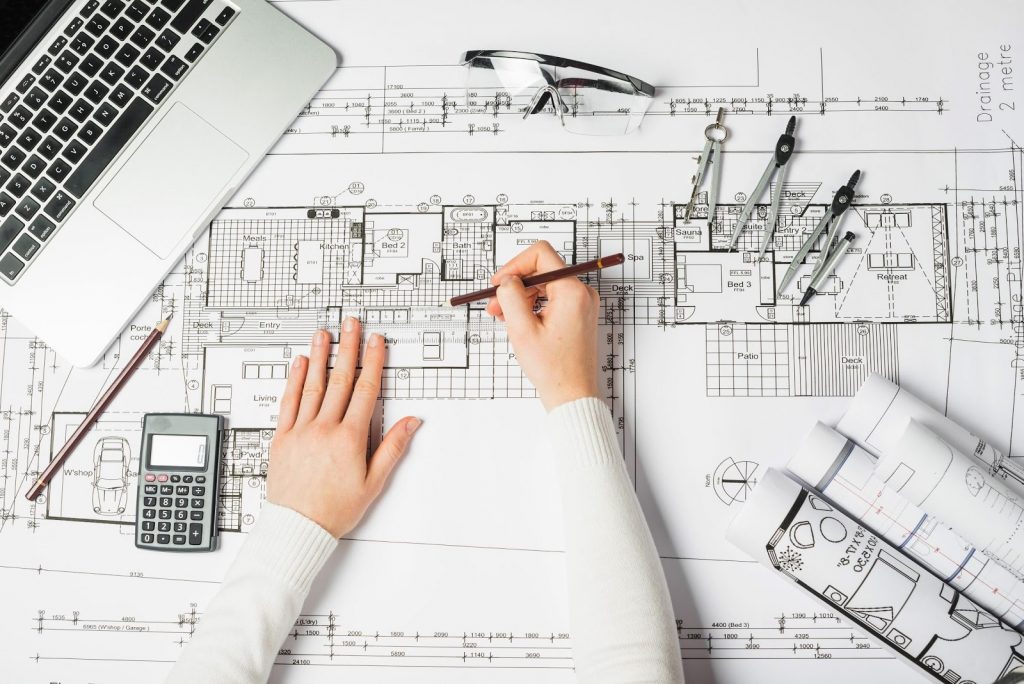Beyond the Blueprint: Cultivating Thoughtful Architecture Education

Architecture Education
Introduction
In the intricate world of architecture, there’s a profound understanding that buildings aren’t merely constructed; they’re envisioned, felt, and birthed into existence. Architecture education, therefore, extends beyond the realms of blueprints and CAD designs. It is about cultivating minds that can seamlessly marry aesthetics with functionality, history with innovation, and bricks with ethos. In this exploration, we delve into the ways architecture education is evolving beyond traditional blueprints to build minds and craft architects of the future.
Also Read:- Top 20 Best Architecture Masters Degree Programs After B.Arch
Besides a long prospectus to become an architecture virtuoso for 5 years Architecture bears a lot of lessons outside the lecture halls and studios. Which seems like an eternity, both the curriculum and duration of it, the quinquennial teaching covers a wider spectrum than just planning, designing, and constructing buildings or other structures.
The Pillars of Modern Architecture Education
- Historical Appreciation: A true architect understands the whispers of old walls and the tales of ancient structures. Encouraging historical studies helps architects create buildings that resonate with stories and continuity.
- Environmental Consciousness: Today’s architects aren’t just building structures; they’re shaping landscapes. Emphasizing sustainable design and eco-friendly materials is paramount in modern curricula.
- Interdisciplinary Learning: Architecture intersects with sociology, psychology, arts, and even anthropology. Encouraging interdisciplinary studies equips architects to design buildings that reflect and cater to human nuances.
- Technology Integration: While foundational knowledge remains crucial, incorporating technologies like 3D printing, virtual reality, and building information modeling (BIM) ensures architects are industry-ready.
A novice Architecture student, when leaps from school to college, he has ambitions and expectations. The naïve lad already begins building inconceivable structures in their utopia. Entirely unaware that architecture is beyond just construction. I think that given the lessons inside these institutions already recite stories of art, building science, structures, history, climatology along with others, but it still incurs to imbue erratic soft skills in an architecture student. It doesn’t just teach you how to become an architect or how to plan, draw, or construct, rather how to think like an architect.
Evolving Pedagogical Approaches
- Studio Culture: More than classrooms, it’s the studios where ideas bloom. An emphasis on hands-on training, critiques, and iterative design forms the core of architecture education.
- Local and Global Exposure: Field trips, exchanges, and internships, both local and international, expose students to varied architectural styles and challenges.
- Soft Skills Training: Communication, leadership, and teamwork are as vital as technical knowledge. Workshops focusing on these skills are essential to produce architects who are not only designers but also leaders.
Architecture is past “that the bathroom goes there” and “that window will look cool over there”. It is about finding constraints, understanding its components, turning those problems as opportunities, and seeking a solution to them. And, an architecture school will cover exercises and challenges either in form of given assignments or indirectly through abstract manner which will imbibe ARCHITECTURAL THINKING.
Challenges in Modern Architecture Education
- Balancing Tech and Tradition: While it’s vital to integrate technology, there’s a risk of over-reliance. Maintaining a balance to ensure foundational skills are not overshadowed is crucial.
- Overemphasis on Theory: Application often speaks louder than words. A shift towards more practical, real-world challenges helps students transition seamlessly into professional roles.
The system of education is followed in such a school that doesn’t just make you ace one subject called architecture, but it is disintegrated into various other strata of learning which further dilutes to each subject linked with a firm passionate thought.
This is what I learned in such varied subjects:
- Architectural Design
- Discovering opportunities and constraints of a project
- Learning human behavior and understanding the basic psychology of a given client
- Rectifying problems and Searching for appropriate solutions
- Constantly switching between traditional hand-drawings and sketching with contemporary technology
- Translating ideas through anything with or beyond graphics and words
- Justifying design via communication and presentation skills
- History
- Visiting diverse styles, culture, and timespan
- Understanding evolution and technological changes
- Linking time, culture, location, and climate
- Learning from historic faults
- Computer
- Learning modern methods of designing
- Decoding files into different types based on user-comfort
- Modeling beyond physical challenges
- Graphic designing, layout, and presentation
- Building materials and construction
- Choosing materials with extreme advantages for a given project
- Using material properties for maximum rewards
- Learning details
- Structures
- Keeping structures erect and reliable
- Concerning structural knowledge to enhance the design
- Visualizing practical and safe spaces
- Considering forces against the building and its components
- Relating materials with the strength
- Basic mathematics and calculations
These are momentarily what specific exercises in colleges impart about architecture, yet if you ask an Architect, their learning is never constrained to this. It is mostly the in-betweens of these design glitches which aid in a true transformation of rudimentary to critical thinking.
- Quality of space: applying to buildings, landscapes, and infrastructure, the quality of space enhances the living experience of the user clarifying that buildings are not just about the column, beam, and slab but they portray the experience that comes from living under such permutations and combinations of bricks. It teaches us about how visual attributes and the feeling of space can provide a different meaning to our design.
- Embracing criticism: It is fairly common to see sheets being torn apart and month-long labor all in vain. But when a young student works endlessly, discovering new concepts only to come up with a solution that gets scorned by jurors and teachers. It is not the sardonic comments, but the disappointment that precedes it which brings utmost sadness. After such limitless happenstances, one learns to accept such denunciation which is not just ignored, but taken into account to improve designing.
- Getting over mistakes: After accepting criticism, moving on is important, an idea we often learn at later stages of our education. It is fathomable that a lot of time and thought went into making a project, however, clinging to an uncertain or incorrect thought might be harmful. As soon as mistakes are rectified, they must be removed to prevent time wastage.
- SELLING YOUR IDEA: despite criticism, a designer needs to be persuasive and convincing. In an Architecture school, you’ll notice many such tactics involving cool maquette models, 3D renders, innovative sketches, precise details, realistic walkthroughs, interactive animations, and sometimes even basic layouts. Decent demonstration encompasses such elements harmonizing descriptive illustrations/ diagrams and comprehendible yet resounding language.
- Referencing smartly: Ideas are not always a Eureka strategy, It strikes you anytime anywhere, amidst the serene hills and the clam lake, or your toilet. Sometimes you’ll end up with hours of scrolling through sites to see already made construction. You don’t learn to get more ideas but how to seek them.
- All about the details: Intricate. Elaborate. Descriptive.
That is how design is read. For armatures, detailing resides in the drafting sheets but instead it is the inclusive thought of such designs. An architect learns to pay attention to the intricacies in different concepts in design and construction. Those are details.
- Construction v/s design: The undergraduate begins to appreciate the need of a designer and understands why computers and algorithms fail to design spaces as they can’t change the emotion it brings.
- An amalgamation of science and art: Architecture is one of the only fields which require both logical and abstract thinking. An architect needs to design according to statistics of climate, location, material appropriateness, building stability, ventilation, etc. And with all that in mind, he still manages to impart and artsy feel to it. It is not mostly the curvier edges or uniqueness of materials chosen but sometimes how an architect manages to satisfy all logistics along with client requirements that depict the real creativity.
- Respecting all fields: A designer is expected to work in a team, with fellow architects, clients, contractors, structural engineers, laborers, and many other people from different backgrounds. Thus, an architecture student never thinks too highly of themselves and can be spotted publicly sketching, taking measurements, or carrying hefty models across campus.
Conclusion
The brick and mortar world of architecture, when viewed through the prism of modern education, is a vibrant tapestry of art, science, history, and vision. As architectural pedagogy evolves, there’s a clear understanding that crafting an architect goes beyond teaching them to draft blueprints. It’s about building minds that can envision spaces of the future while reverently nodding to the past, crafting designs that don’t just stand tall but also resonate with the heartbeat of humanity.








